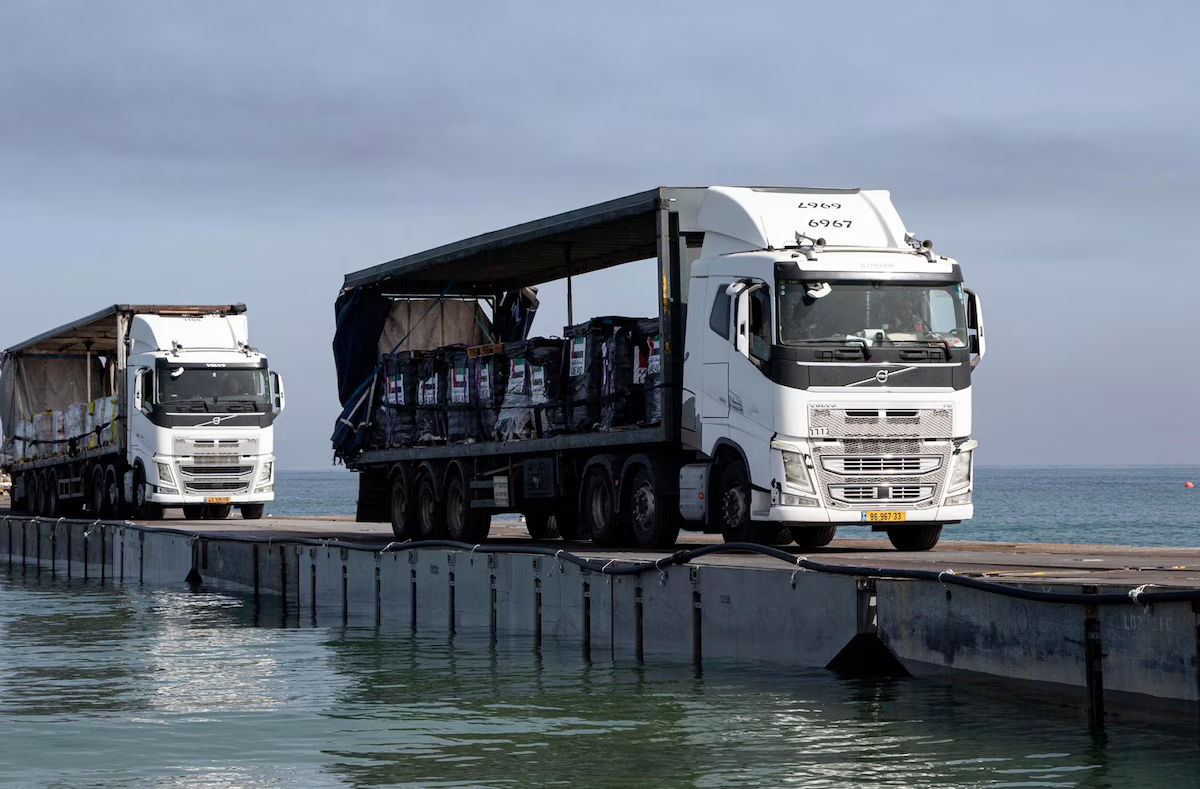The U.S. pier off Gaza’s coast will undergo at least $22 million in repairs before returning to service soon, two Pentagon officials said, an indication of the scope of damage it suffered when rough seas ripped the structure to pieces and abruptly halted the humanitarian mission only days after initial aid shipments went ashore.

The Gaza pier, also known as the temporary humanitarian pier system, was built by the U.S. The construction and installation of the pier were primarily conducted by the U.S. military, with the U.S. Army and Navy working together to assemble the floating pier off the shore of Gaza. The installation was completed on May 16, 2024, with the U.S. military finishing the offshore construction of the pier. It is believed that the Israelis attached the US-constructed pier to the land.
While early Pentagon estimates suggested the pier could deliver up to 150 truckloads of aid a day when in full operation it never achieved anything like this amount. The aid brought through the pier was enough to feed thousands for a month, but UN data shows it barely made a dent in the overall need of Gaza’s 2.3 million people. The World Food Program was coordinating aid delivery.
The pier broke apart due to strong winds and heavy seas. The damage was reported on May 28, 2024, and the U.S. military announced that the pier would need to be removed and repaired.
NOTE: The initial cost of the project was estimated at $320 million, but it dropped to $230 million due to contributions from Britain and because the cost of contracting trucks and other equipment was less than expected.
The Gaza pier is the single most incredible example of the stupidity, incompetence, and delusion that characterizes Biden admin foreign policy. Consider:
— Noah Pollak (@NoahPollak) June 6, 2024
– It's mind-bogglingly expensive — closing in on half a billion dollars.
– In practice it does the opposite of what was… https://t.co/jibyWsE35Q